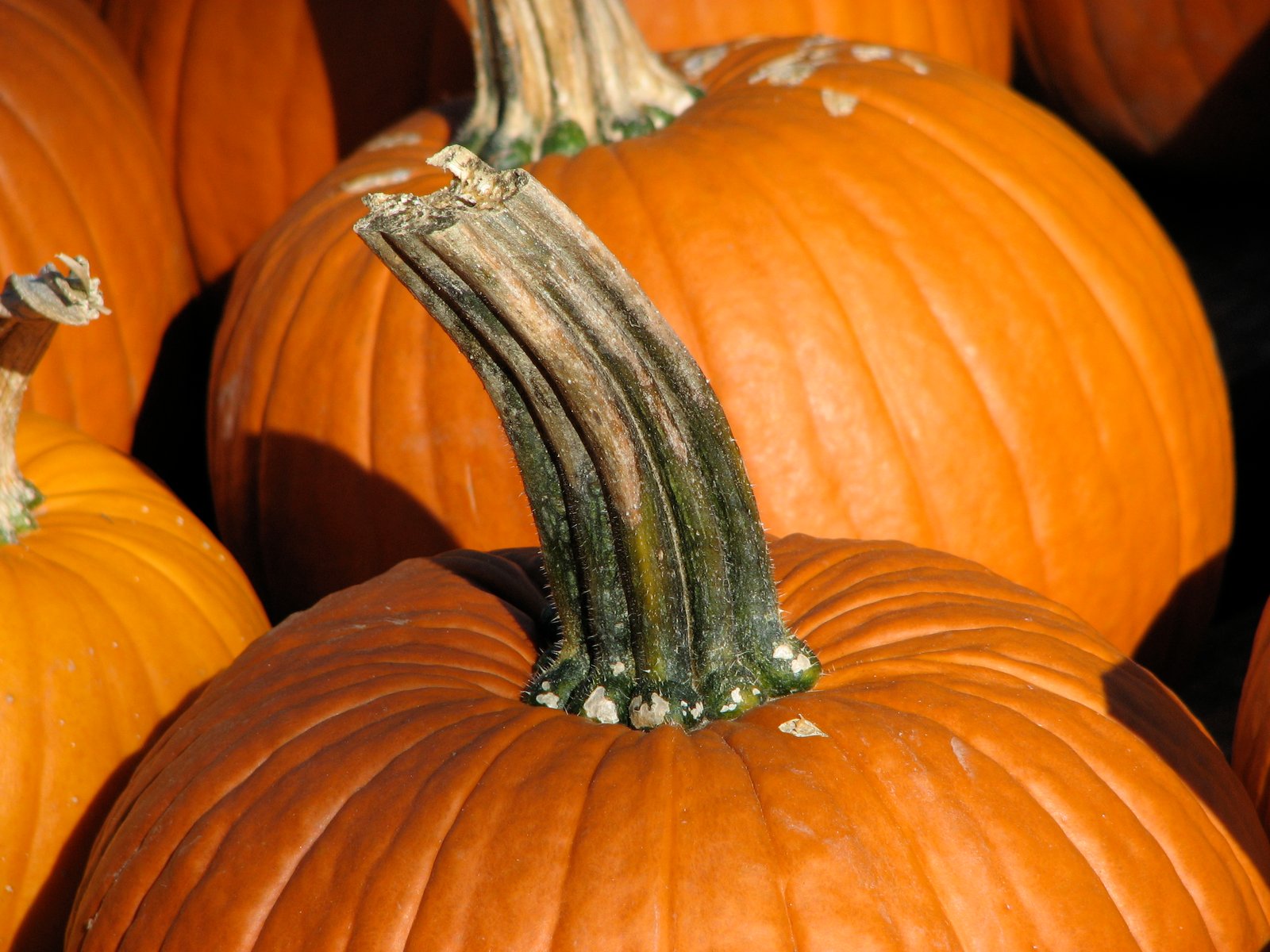Hark, canine enthusiasts and pumpkin aficionados alike! Prepare to embark on an unconventional voyage through the realms of dog training, where the humble pumpkin shall take center stage as the ultimate nutritional boost for our furry companions. Step aside, traditional treats and cumbersome training methods, for this unconventional but oh-so-effective approach is bound to revolutionize the way we foster obedience and wellness in our four-legged friends. So, join us on this journey of discovery as we unravel the secrets behind utilizing pumpkin’s remarkable powers to enhance both physical and mental well-being in our beloved canine companions. Unleash the potential of this vibrant orange wonder and watch as your furry pals wag their tails with satisfaction and thrive like never before!
Table of Contents
- Preparing Pumpkin for Dog Training: The Essential Steps
- Unlocking the Nutritional Benefits of Pumpkin for Your Canine Companion
- Incorporating Pumpkin into Training Treats: Tasty and Healthy Options
- Maximizing Pumpkin’s Role in Canine Behavioral Conditioning
- Taking Advantage of Pumpkin’s Versatility: Training Tips and Tricks
- Q&A
- The Way Forward

Preparing Pumpkin for Dog Training: The Essential Steps
When it comes to dog training, pumpkin can be a fantastic tool to aid your furry friend’s learning experience. However, preparing the pumpkin properly is essential to ensure its effectiveness. Here are the essential steps to follow:
- 1. Choose the right pumpkin: Look for a small pumpkin that is firm and ripe. Make sure it is free from any mold or rot.
- 2. Wash and clean: Thoroughly wash the pumpkin under running water to remove any dirt or debris. Scrub gently with a vegetable brush if needed.
- 3. Remove the stem and skin: Use a sharp knife to carefully cut off the stem. Then, using a peeler or knife, remove the skin of the pumpkin. This step is important as the skin can be tough and difficult for dogs to digest.
- 4. Scoop out the seeds and pulp: Cut the pumpkin in half and scoop out the seeds and stringy pulp with a spoon. These can be a choking hazard for your pet, so ensure you remove them completely.
- 5. Cook the pumpkin: You can either boil or bake the pumpkin until it becomes soft and tender. This will make it easier to incorporate into your dog’s training treats or meals.
By following these essential steps, you can ensure that the pumpkin is prepared safely and ready to assist in your dog’s training sessions. Remember, always consult with your veterinarian before introducing any new foods into your pet’s diet.

Unlocking the Nutritional Benefits of Pumpkin for Your Canine Companion
Pumpkins aren’t just for carving and pies! These vibrant orange fruits pack a powerhouse of nutrients that can greatly benefit your furry friend. Rich in vitamins, minerals, and fiber, pumpkins can be a welcome addition to your canine companion’s diet. Here’s a closer look at how unlocking the nutritional benefits of pumpkin can promote a healthier and happier pup:
- Improved Digestive Health: Pumpkin is an excellent source of fiber, whether fresh or canned. Adding a tablespoon or two of pureed pumpkin to your pup’s meals can help regulate their digestive system and relieve constipation or diarrhea. It acts as a natural stool softener and can promote a healthier digestive tract.
- Weight Management: If you’re looking to help your pooch shed a few pounds, pumpkin can be a valuable ally. Low in calories and high in fiber, it can give your dog the feeling of a full stomach without consuming excessive calories. Incorporating pumpkin into their meals can aid in weight management and prevent overeating.
- Boosted Immune System: Pumpkins are packed with antioxidants, vitamins A, C, and E, as well as beta carotene. These nutrients all contribute to a stronger immune system, helping your canine companion fight off infections and diseases more effectively.
- Healthy Skin and Coat: The abundance of vitamins and minerals found in pumpkin contribute to healthy skin and a shiny coat for your furry friend. Nutrients like zinc and fatty acids help reduce itchiness, improve overall skin health, and reduce the risk of dryness or flakiness.
Unlock the nutritional benefits of pumpkin for your canine companion by incorporating this versatile fruit into their diet. Remember to introduce it gradually, monitoring your pup’s reaction and consulting with a veterinarian for specific portion sizes. Embrace the power of pumpkin and keep your four-legged friend on the path to a healthier and happier life.
Incorporating Pumpkin into Training Treats: Tasty and Healthy Options
When it comes to training your furry friend, finding the perfect treats that are both delicious and nutritious can be a challenge. Look no further than the humble pumpkin! This versatile vegetable is not only packed with essential nutrients, but it also adds a delightful flavor to your pup’s training rewards. Here are a few creative ways to incorporate pumpkin into your training treats:
- Pumpkin Biscuits: Whip up a batch of homemade pumpkin biscuits using whole wheat flour, pumpkin puree, and a touch of cinnamon. These crunchy treats are perfect as a reward for good behavior during training sessions.
- Pumpkin Chews: For pups who love a good chew, try making pumpkin chews by mixing pumpkin puree with rolled oats, peanut butter, and a drizzle of honey. Shape them into bite-sized pieces and bake until golden brown. Your furry pal will drool over these tasty and healthy delights.
- Pumpkin Frozen Popsicles: During hot summer days, nothing beats a refreshing frozen treat. Blend together pumpkin puree, plain yogurt, a splash of water, and a hint of turmeric for an extra health boost. Pour the mixture into ice cube trays or silicone molds and freeze. These pumpkin popsicles not only provide a tasty treat but also help to cool down your pup after an intense training session.
Remember, moderation is key! While pumpkin is a fantastic addition to your dog’s training treats, it should be used in moderation to avoid upsetting their stomachs. So go ahead, get creative in the kitchen, and make training sessions a flavorful and healthy experience for your four-legged companion!
Maximizing Pumpkin’s Role in Canine Behavioral Conditioning
In recent years, pumpkin has emerged as a popular and versatile ingredient in canine behavioral conditioning. Its natural goodness and numerous benefits make it an excellent addition to any training regimen. So, how can we maximize the role of pumpkin in our furry friends’ behavioral conditioning?
- Training Treat: Pumpkin can be pureed and frozen into bite-sized treats, creating a delicious and healthy reward for good behavior during training sessions.
- Food Enrichment: By stuffing a Kong toy or other food puzzles with a mixture of pumpkin and their usual dog food, we can keep our canine companions mentally stimulated and engaged for longer periods.
- Calming Effect: The natural properties of pumpkin can help soothe and calm anxious dogs, making it a valuable tool in behavior modification for problem behaviors such as separation anxiety or excessive barking.
- Dietary Aid: Pumpkin is also a wonderful source of fiber, aiding in digestion and promoting a healthy gut. This can contribute to overall well-being and improved behavior in dogs.
Remember to consult with a veterinarian before incorporating pumpkin or any new ingredient into your dog’s diet or training routine. With its vast potential, pumpkin can truly play a pivotal role in maximizing canine behavioral conditioning.
Taking Advantage of Pumpkin’s Versatility: Training Tips and Tricks
Pumpkins are known for their versatility, not just in the kitchen but also in training! Whether you have a mischievous pup or a curious feline, harnessing the power of pumpkins can be an excellent way to engage and entertain your furry friend. Here are some amazing training tips and tricks to maximize the potential of this vibrant orange fruit.
1. Pumpkin Agility: Create a mini agility course using pumpkin-themed obstacles, such as jumping over carved pumpkins or weaving through pumpkin-shaped hurdles. It’s a fun and creative way to keep your pet physically active and mentally stimulated. Plus, it adds a festive touch to your training sessions.
2. Pumpkin Treat Dispenser: Turn an ordinary pumpkin into an interactive treat dispenser! Hollow out a small section of the pumpkin, fill it with your pet’s favorite treats, and let them figure out how to get to the goodies. This activity promotes problem-solving skills and keeps them occupied for hours. Just ensure the pumpkin is safe for your pet to nibble on.
3. Pumpkin Scent Work: Dogs have an incredible sense of smell, and using pumpkins as a scent game is a fantastic way to challenge their olfactory abilities. Hide small pumpkin-scented objects around your house or yard and encourage your dog to find them using their nose. Reward them with praise or treats when they locate each item successfully.
Remember, each pet is unique, so tailor these training tips to suit their individual needs and abilities. Keeping training sessions short and enjoyable will ensure that both you and your furry companion have a pumpkin-filled adventure!
Q&A
Q: Can I use pumpkin in my dog’s training? Is it safe for them?
A: Absolutely! Pumpkin is safe for dogs and can be a nutritious addition to their training regime. Just make sure to use plain, pureed pumpkin without any added sugars or spices.
Q: How can I incorporate pumpkin into my dog’s training routine?
A: Pumpkin can be used in various forms during training. You can mix it with their regular treats, stuff it in puzzle toys, or even freeze it into delicious pumpkin popsicles for a refreshing reward.
Q: What are the benefits of using pumpkin in dog training?
A: Pumpkin is a great source of fiber, vitamins A and C, and beta-carotene, which promotes good eye health. It can aid in digestion, weight management, and provide a tasty alternative to traditional training treats.
Q: Can pumpkin help with my dog’s digestive issues?
A: Yes, pumpkin is known for its digestive benefits in dogs. It can help regulate bowel movements and soothe upset stomachs. However, if your dog has chronic digestive issues, consult with a veterinarian for a proper diagnosis and treatment plan.
Q: How much pumpkin should I give my dog during training?
A: The amount of pumpkin you give your dog will depend on their size. As a general guide, start with a teaspoon for small breeds and gradually increase the amount to a tablespoon for larger dogs. Monitor your dog’s response and adjust accordingly.
Q: Are there any risks or side effects associated with feeding pumpkin to dogs?
A: In most cases, pumpkin is safe for dogs in moderate amounts. However, excessive consumption may lead to loose stools or mild gastrointestinal upset. Always introduce new foods gradually and consult your vet if you have any concerns.
Q: Can pumpkin be a substitute for my dog’s regular diet?
A: While pumpkin can be a beneficial addition to your dog’s diet, it should not replace their regular meals. It is best used as a supplement or training treat to provide a nutritional boost.
Q: Is pumpkin suitable for all dogs, regardless of their age or breed?
A: Pumpkin can be enjoyed by dogs of various ages and breeds; however, individual sensitivities can vary. It is advisable to introduce pumpkin gradually into your dog’s diet and monitor for any adverse reactions.
Q: Are there any other fruits or vegetables that can be used in dog training?
A: Yes, there are plenty of dog-friendly fruits and vegetables that make great training treats. Some safe options include carrots, sweet potatoes, blueberries, and apples. Remember to research each specific fruit or vegetable beforehand to ensure they are safe for dogs.
The Way Forward
As we wrap up our culinary journey through the fascinating world of dog training, we hope you have discovered a new and nutritious secret weapon: the humble pumpkin. From its remarkable health benefits to its incredible versatility in the kitchen, this vibrant orange wonder truly deserves a spot in your pup’s training regimen.
By incorporating pumpkin into your furry friend’s diet, you provide them with a nutritional boost that goes beyond the ordinary. Whether you’re utilizing it as a tantalizing treat or blending it into their meals, the benefits are indisputable. Not only does pumpkin offer a wide array of vitamins and minerals, but its high fiber content promotes a healthy digestion process, ensuring your pup stays happy and energized.
But the wonders of pumpkin extend far beyond their nutritional value. As we explored the creative uses in training, it became clear that this extraordinary ingredient can work wonders in strengthening the bond between you and your four-legged companion. From creating interactive puzzle toys to mastering new tricks with pumpkin’s alluring scent as a reward, the possibilities are as endless as the wagging tails and joyful barks that accompany each successful training session.
So, let’s celebrate this captivating autumnal gift together. Embrace the power of pumpkin and let it enhance your dog’s life in ways you never thought possible. With each delectable morsel or heartfelt training session, you’re not just nourishing your pup’s body but also nourishing your bond, forging a connection that is as beautiful as a pumpkin patch in full bloom.
Remember, when it comes to incorporating pumpkin into dog training, there are no limits to your creativity. So, put on your chef’s hat and let your imagination run wild, creating mouthwatering treats and innovative training techniques that will have your furry friend begging for more.
So go forth, dear reader, armed with the knowledge of pumpkin’s extraordinary benefits, and watch as your pup embarks on a training journey filled with flavor, love, and boundless joy. Happy training, and may your adventures with pumpkin be as remarkable as the bond you share with your beloved furry companion.
As an affiliate, my content may feature links to products I personally use and recommend. By taking action, like subscribing or making a purchase, you’ll be supporting my work and fueling my taco cravings at the same time. Win-win, right?
Want to read more? Check out our Affiliate Disclosure page.